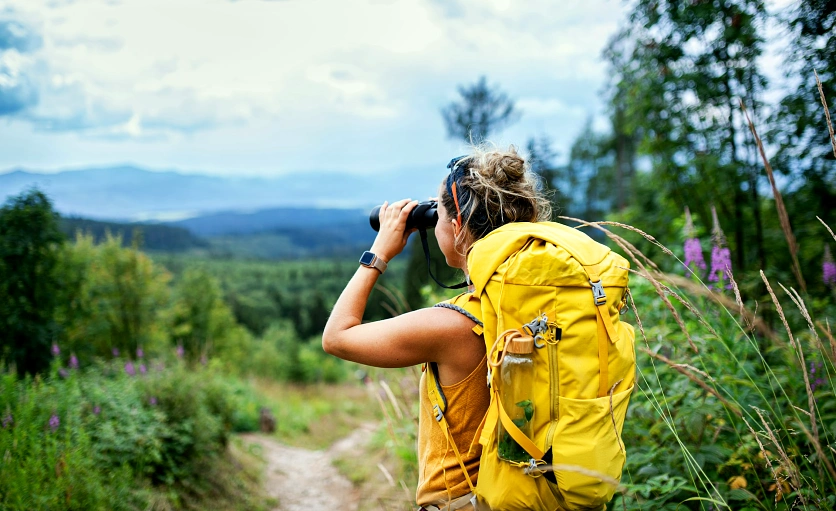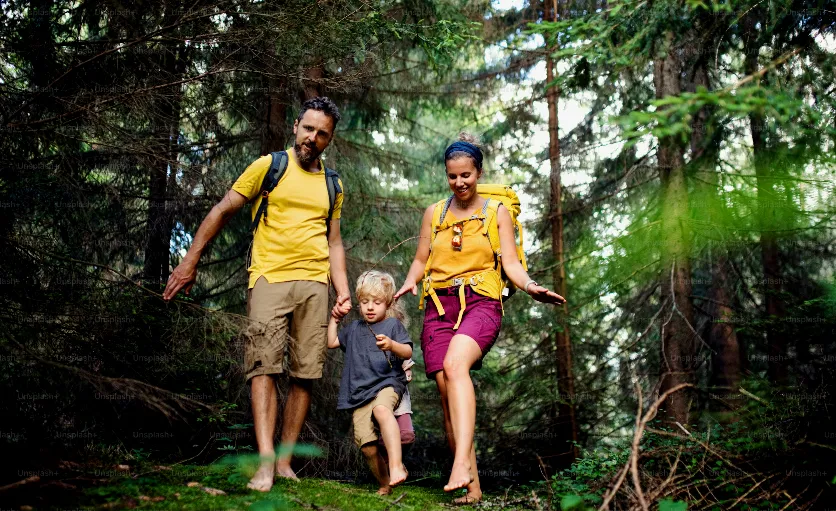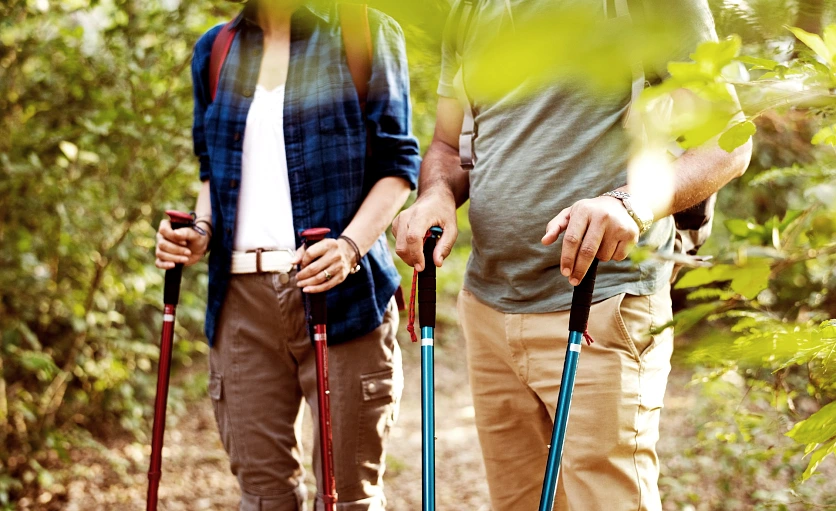Hiking used to be simple. Just you, a trail, and the steady rhythm of your footsteps. But these days, it can feel like something to document rather than experience—tracking steps, chasing peaks, curating the perfect summit photo. It’s become less about being there and more about proving we were there.
But what if we let go of all that? What if hiking wasn’t about reaching the end at all, but about sinking into the middle—the part where the magic happens?
Slow hiking is just that—a chance to wander without a timeline, to notice what others rush past. It’s about moving through nature at a pace that allows you to actually experience it, not just pass through. No hurry, no destination—just you, the trail, and the quiet joy of walking for the sake of it.
This way of moving isn’t just for hiking—it’s part of a larger shift called soft travel. Think of it as the opposite of the whirlwind itinerary, where sights are checked off a list as quickly as they appear. Soft travel is about immersion rather than completion. It’s lingering in a quiet village instead of dashing from landmark to landmark, letting a meal last an hour longer because the conversation is good, or taking a slower route just because it feels right.
And when it comes to hiking, it’s about letting the journey unfold naturally—following the rhythm of your breath rather than the pressure of a stopwatch. Not chasing the peak, but embracing the path.
Of course, slowing down takes practice. We’re so used to measuring, timing, and tracking that simply walking—without a goal, without a finish line—can feel unfamiliar. But with a little intention, hiking can become something deeper, richer, and far more rewarding.
Here’s how to begin.
How to Start Slow Hiking
If you’re used to fast-paced walks or structured hikes, shifting to slow hiking might take some adjustment. The good news? You don’t need special gear or training—just a willingness to let go of the rush. These steps will help you ease into a slower, more mindful way of walking.
🌿 Move Mindfully: Find Your Rhythm
Walking isn’t just a way to get from one place to another. It’s a rhythm, a conversation between you and the earth beneath your feet.

In A Philosophy of Walking, Frédéric Gros reminds us that walking isn’t just exercise—it’s a way of existing. A way of resisting the rush of the modern world. When you slow down, the path stops being a means to an end and becomes a space to think, feel, and simply be.
Try this:
✅ Walk without checking your watch or tracking steps.
✅ Pay attention to the feel of your movement—your breath, the way your foot meets the ground.
✅ Let go of pace or progress. Walk as if time doesn’t matter.
Think of it as the walking version of sipping tea on a rainy morning—unhurried, cosy, exactly right.
🌿 Pause Often: Follow Your Curiosity
There’s no medal for hiking the fastest. Let yourself stop—often, and without reason.

In Pilgrim at Tinker Creek, Annie Dillard writes about the art of noticing—how the smallest things, when truly seen, can feel like miracles. A single curled fern, uncurling in slow motion. The shimmer of spider silk catching the light. The way a single raindrop clings to the edge of a leaf before finally letting go.
Try this:
✅ Stop and observe something small—an insect, a patch of moss, the texture of tree bark.
✅ Follow your curiosity. If something catches your eye, take a closer look.
✅ Sit down and just be—feel the air, listen to the sounds, let the landscape unfold around you.
Some hikes are measured in miles. The best ones are measured in moments.
🌿 Let Go of the Clock: Some Trails Aren’t Meant to Be Finished
Not every hike needs a destination. Some of the best ones end with a nap under a tree, a long pause by a lake, or an unexpected detour to follow the sound of running water.
Forget the pressure to “complete” a trail. Let the path unfold at its own pace.
Try this:
✅ Set out on a trail with no expectation of reaching the end.
✅ If you find a side path that looks interesting, take it. Twice, if you feel like it.
✅ If you’re enjoying a moment, let yourself stay in it—don’t move on just because you should.
Gros reminds us that walking is an act of freedom—freedom from schedules, from expectations, from the need to perform. When you stop measuring a hike by distance or time, you start experiencing it for what it really is—a way to slow down, breathe, and belong.
Because truly, nobody ever regretted taking the scenic route twice.
🌿 Engage All Your Senses: Let the Trail Speak to You
Hiking isn’t just about seeing—it’s about experiencing.

Close your eyes and listen—not just to the obvious sounds, but to the layers beneath them. The rustling leaves. The creak of an old tree. The way wind moves through tall grass, whispering as it passes.
Try this:
✅ Walk for a few minutes without looking around—just listen.
✅ Touch different textures along the way—rough bark, soft moss, cool stones.
✅ Breathe deeply and notice the scent of the air—fresh pine, damp earth, wildflowers in bloom.
Dillard reminds us that attention is a form of devotion. When you truly engage with the world around you, you stop being a visitor and start becoming a part of the landscape itself.
🌿 Choose the Right Hiking Companion
Some people bring out the best in a slow hike. Others speed ahead, eyes fixed on the summit. Choose a hiking buddy who matches your pace—someone who will stop to admire the wildflowers, sit with you to watch the clouds drift, and meander alongside you with no rush to be somewhere else.

Try this:
✅ Hike with a friend who shares your love for slow travel.
✅ Bring a senior dog—one who likes to pause and sniff as much as you do.
✅ And if the best company is just you and the trail? Even better.
🌿 Set Aside Time to Play
Hiking doesn’t have to be serious.

Let your inner child take the lead. Balance along a fallen log. Hop across stepping stones in a brook. Follow a butterfly off the main path, just to see where it leads.
Try this:
✅ Walk barefoot on soft grass or cool river stones.
✅ Climb onto a rock just to get a better view.
✅ Wander off course, just because you can.
You set aside time to be here—why not let the trail surprise you?
Walk Slower, See More
Soft travel is about sinking into a place rather than passing through it—and slow hiking is the same. It’s a quiet rebellion against schedules, step counts, and the need to perform. It’s a way of saying: This moment is enough. This place is enough. I am enough.
So next time you step onto a trail, forget the summit. Let the path surprise you. Linger a little longer. Wander off course.
Because sometimes, the best part of a hike isn’t where it leads. It’s the moments you let yourself notice along the way. 🌿
